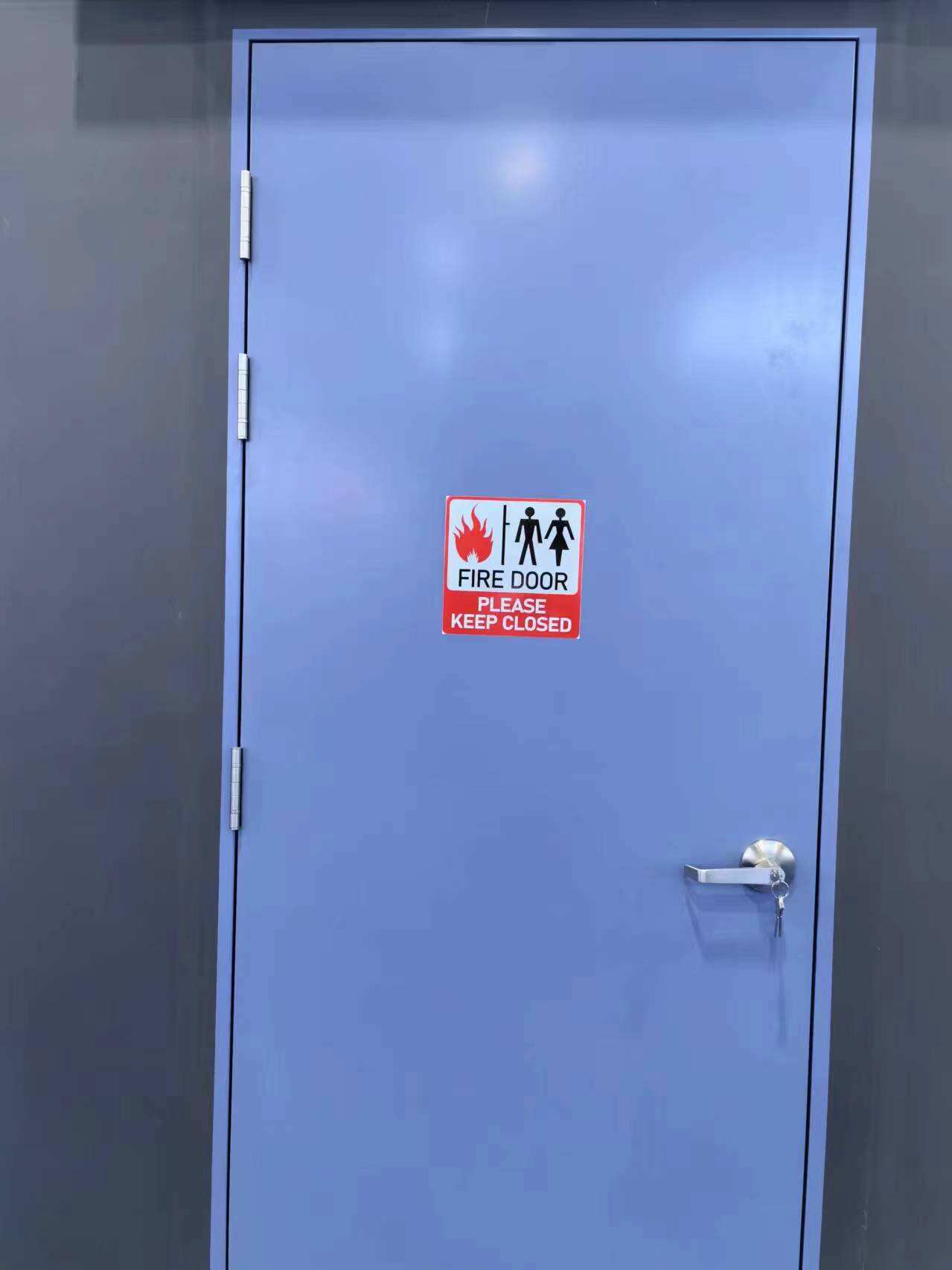How Often Should Fire Doors Be Inspected and Maintained?
Fire safety in commercial and residential buildings depends on more than alarms and sprinklers. Passive fire protection systems, such as fire doors, play a critical role in preventing the spread of smoke and flames. While alarms provide warning and sprinklers suppress flames, fire doors create physical barriers that give occupants time to evacuate and firefighters time to respond. However, fire doors only serve their purpose if they are properly inspected and maintained.
A common mistake among building owners and facility managers is to assume that once installed, fire doors require little attention. In reality, fire doors are active safety devices that must remain in good condition at all times. Hinges, seals, closing mechanisms, and frames can deteriorate with daily use, and if these issues are not detected through inspection, the fire door may fail during an emergency.
This article explores how often fire doors should be inspected and maintained, what elements should be checked, and why consistent care is not just a regulatory requirement but also a life-saving practice.
The Importance of Fire Door Maintenance
The main purpose of fire doors is to compartmentalize fire and smoke. By sealing off corridors, stairwells, and rooms, they slow down the spread of hazards, keeping escape routes clear. If a fire door does not close properly, has damaged seals, or contains broken hardware, its effectiveness is compromised.
Daily wear and tear is unavoidable. In office buildings, hotels, hospitals, and schools, fire doors may open and close hundreds of times a day. Constant use can loosen hinges, wear down seals, or affect the automatic closing device. Without inspection, these problems can go unnoticed until it is too late.
Regular maintenance ensures that fire doors perform as intended, reducing the risk of uncontrolled fire spread and enhancing the safety of occupants.
Regulatory Guidelines for Fire Door Inspections
Different regions and countries have their own fire safety regulations, but most follow international best practices. In many jurisdictions, fire doors are required to undergo regular inspection and maintenance by law. Non-compliance can result in fines, legal liability, and, in the worst-case scenario, loss of life.
In the United States, the National Fire Protection Association (NFPA) 80 standard requires fire doors to be inspected and tested at least annually. The inspection should verify that all components are functional and that the door meets safety standards. Similarly, in the United Kingdom, fire safety regulations emphasize routine checks, including weekly and monthly inspections of critical components.
Even where local laws are less specific, building codes generally require regular maintenance of fire protection systems, including fire doors. Building owners must treat inspection as a legal obligation as well as a practical necessity.
Recommended Frequency of Inspections
Experts recommend a tiered approach to fire door inspections. Instead of relying solely on an annual inspection, multiple checks at different intervals ensure continuous functionality.
Daily or Weekly Visual Checks
Facility staff should perform basic checks daily or weekly. This includes ensuring that the door is not blocked, wedged open, or visibly damaged. Staff can also verify that the door closes fully and that no gaps or obstructions prevent a proper seal. These checks do not require technical expertise but provide an early warning if the door is compromised.
Monthly Functional Tests
Once a month, a more thorough check should be carried out. This involves testing the self-closing device, examining seals, and checking the alignment of the door. The door should close smoothly from any angle without slamming or sticking. Inspectors should look for damaged hardware, cracked glass panels, or missing signage.

Annual Professional Inspections
At least once a year, a certified professional should conduct a detailed inspection. This inspection follows formal guidelines, checking all components including the frame, hinges, closers, seals, vision panels, and signage. Professionals also measure clearances around the door to ensure they fall within allowed tolerances. Any issues identified must be addressed immediately to maintain compliance.
Post-Incident Inspections
If the building experiences a fire, impact damage, or any major renovation work, all fire doors in the affected area should be re-inspected. Even if they appear intact, hidden damage may compromise performance.
Key Elements to Inspect
During inspections, several critical features of fire doors should be evaluated:
The door leaf must be free from cracks, warping, or holes. The frame should be secure and properly aligned with the leaf. Hinges should be tightly fixed with no missing screws, and they must be made of fire-rated materials. Seals are vital; intumescent seals must be intact with no signs of damage, while smoke seals should create continuous contact around the perimeter. The self-closing device should operate smoothly and reliably. Gaps around the door should not exceed the recommended limits, typically 3-4 millimeters along the sides and top. Vision panels and fire-rated glazing must be unbroken and properly fitted. Finally, appropriate signage such as “Fire Door Keep Shut” must be clearly displayed.
Consequences of Neglecting Fire Door Inspections
Failure to inspect and maintain fire doors can have severe consequences. In the event of a fire, a defective door may fail to close properly, allowing smoke and flames to spread unchecked. This can render escape routes unusable and endanger lives.
From a legal perspective, neglecting fire door maintenance can result in prosecution, fines, and invalidated insurance claims. Insurers often require proof of compliance with fire safety regulations. If an investigation reveals that inspections were not conducted, coverage for damages may be denied.
On a financial level, neglect increases long-term costs. Minor issues, if detected early, are inexpensive to fix. However, when left unaddressed, they may escalate into major repairs or require full replacement of the door.
The Role of Facility Managers
Facility managers have a central role in ensuring that fire doors are inspected and maintained. They must schedule inspections, document findings, and arrange repairs as needed. Keeping accurate records of inspections is vital for compliance. Documentation provides proof during audits, insurance claims, or legal inquiries.
Training staff to recognize common defects also improves overall safety. If employees understand the importance of fire doors, they are less likely to wedge them open or obstruct them with equipment. A culture of awareness reduces risks significantly.
Maintenance Beyond Inspections
Inspection identifies problems, but maintenance ensures they are corrected. Fire door maintenance tasks include replacing worn seals, adjusting or replacing closers, lubricating hinges, and repairing damaged frames. In some cases, upgrading hardware or replacing glass panels may be required.
Maintenance should always use certified fire-rated components. Substituting standard parts compromises the integrity of the door and may void its certification. Professional technicians should handle all significant repairs to ensure compliance.
Benefits of Regular Fire Door Maintenance
Consistent inspection and maintenance provide multiple benefits. They ensure compliance with regulations, reducing legal and financial risks. They also protect occupants by guaranteeing that escape routes remain clear during emergencies. Properly maintained fire doors extend the lifespan of the door itself, reducing long-term costs. They also demonstrate responsible building management, enhancing the reputation of property owners and managers.
In addition, insurers may look favorably on buildings that maintain thorough inspection records, potentially reducing premiums. Beyond compliance and financial benefits, the peace of mind that comes from knowing fire doors will work during a crisis is invaluable.
Integrating Fire Door Inspections into Broader Safety Programs
Fire door inspection should not exist in isolation. It must be part of a broader fire safety management program. This includes fire alarms, sprinklers, emergency lighting, and evacuation planning. Regular fire drills can be combined with visual fire door checks, reinforcing awareness among building occupants.
Facility managers should coordinate inspection schedules with other safety checks, creating an integrated approach. This not only improves efficiency but also ensures that no safety aspect is overlooked.
Conclusion
Fire doors are life-saving devices, but only if they are maintained in proper working order. Regular inspection and maintenance are both legal requirements and practical necessities. Daily or weekly visual checks, monthly functional tests, and annual professional inspections together create a comprehensive safety program.
Neglecting inspections can lead to catastrophic consequences, both in terms of human life and financial liability. Conversely, consistent care extends the life of fire doors, reduces costs, and ensures compliance with regulations. For building owners and facility managers, prioritizing fire door inspection is not optional but essential.
The frequency of inspection should reflect the level of use and risk within the building. High-traffic environments such as schools, hospitals, and offices may require more frequent checks. Ultimately, the key is consistency. Fire doors must be treated as active safety devices that demand the same level of attention as alarms and extinguishers.
By committing to regular inspection and maintenance, building managers protect not only their property but also the lives of every person who walks through their doors.
FAQ
How often should fire doors be inspected?
Fire doors should be visually checked daily or weekly, functionally tested monthly, and professionally inspected at least once a year.
Who is responsible for fire door inspections?
Building owners and facility managers are responsible for ensuring fire doors are inspected and maintained according to regulations.
What happens if a fire door fails inspection?
Any defects must be repaired immediately using certified components. If the door cannot be repaired, it should be replaced to maintain compliance.
Can regular staff perform fire door inspections?
Staff can perform basic visual checks, but annual inspections must be carried out by trained and certified professionals.
Do fire doors need records of inspection?
Yes, detailed records of inspections and maintenance must be kept as proof of compliance for audits, insurance claims, or legal inquiries.
Table of Contents
- How Often Should Fire Doors Be Inspected and Maintained?
- The Importance of Fire Door Maintenance
- Regulatory Guidelines for Fire Door Inspections
- Recommended Frequency of Inspections
- Key Elements to Inspect
- Consequences of Neglecting Fire Door Inspections
- The Role of Facility Managers
- Maintenance Beyond Inspections
- Benefits of Regular Fire Door Maintenance
- Integrating Fire Door Inspections into Broader Safety Programs
- Conclusion
- FAQ

